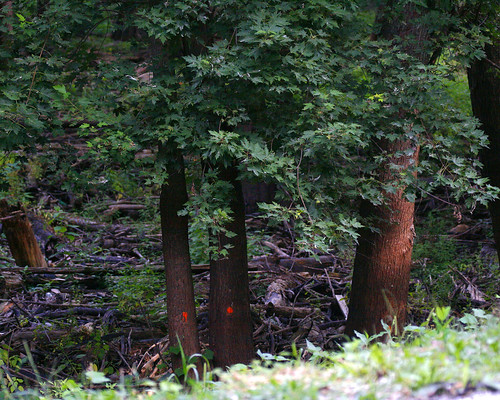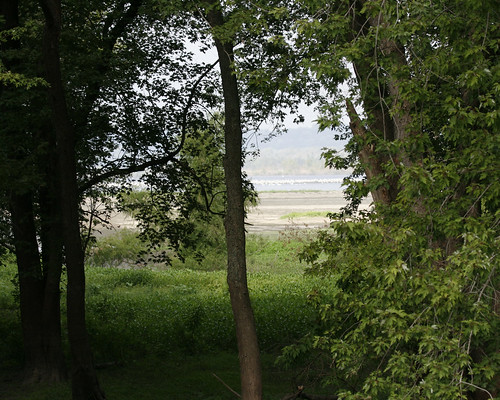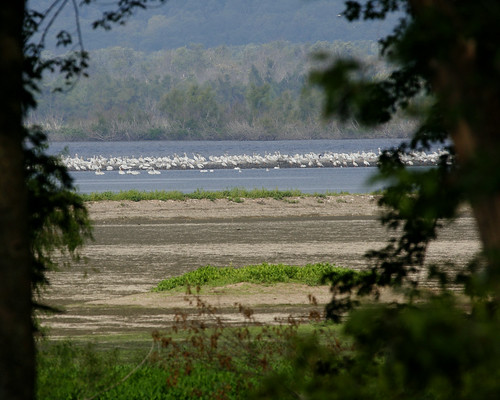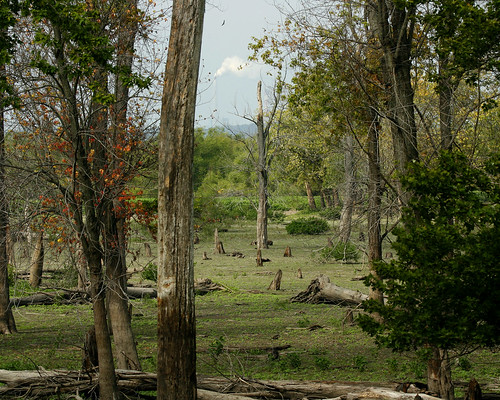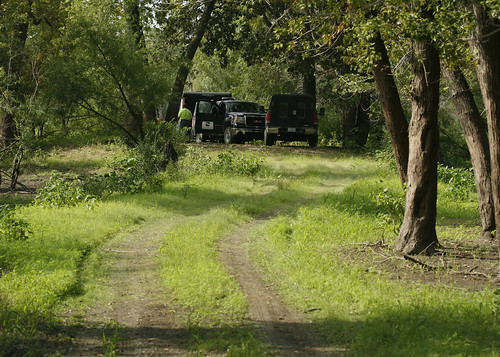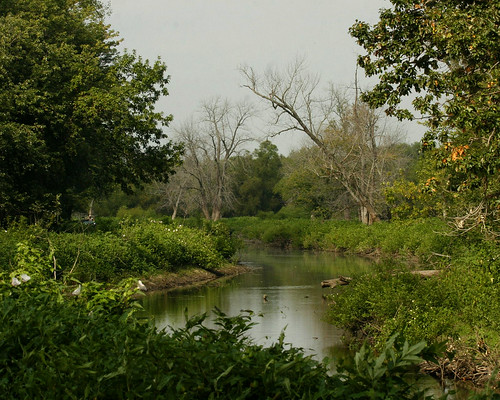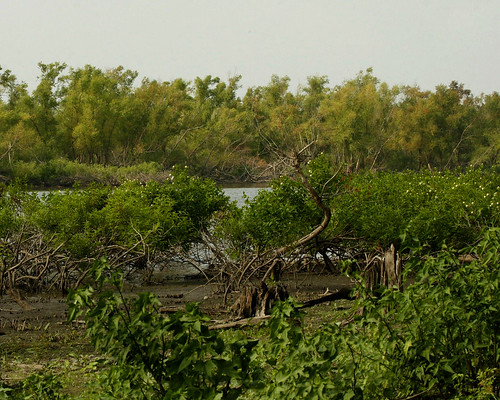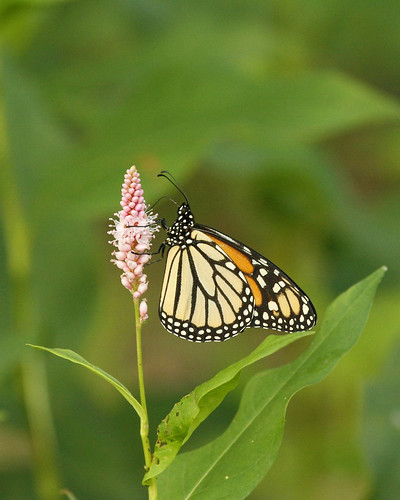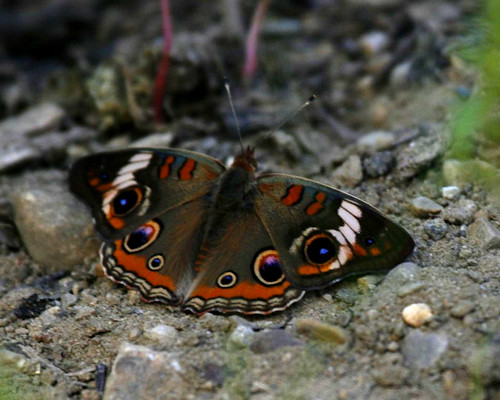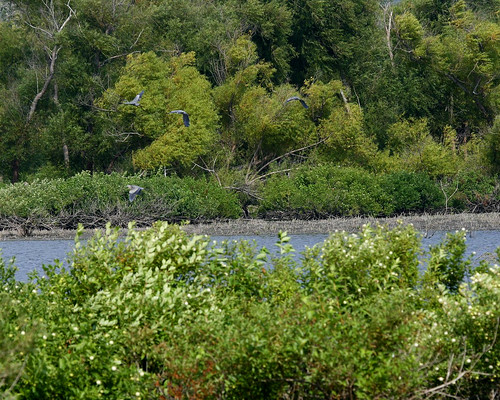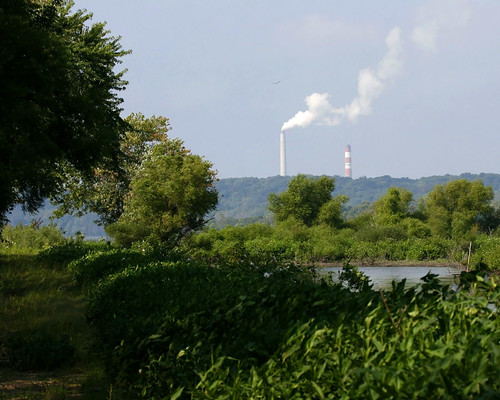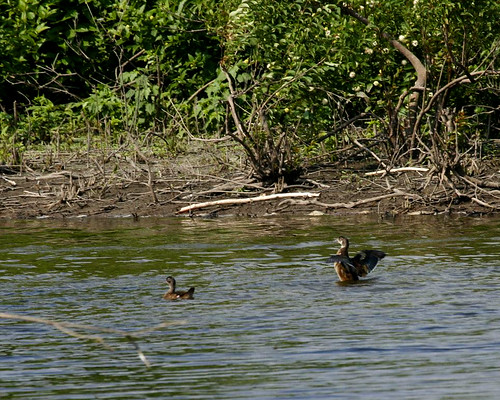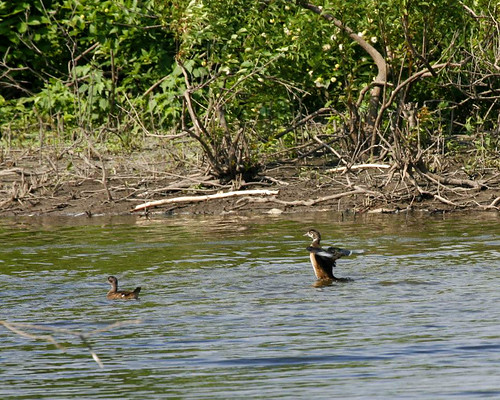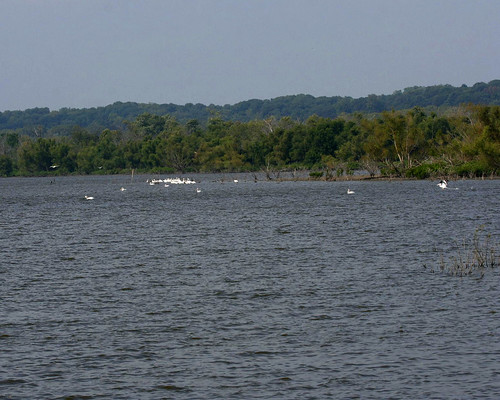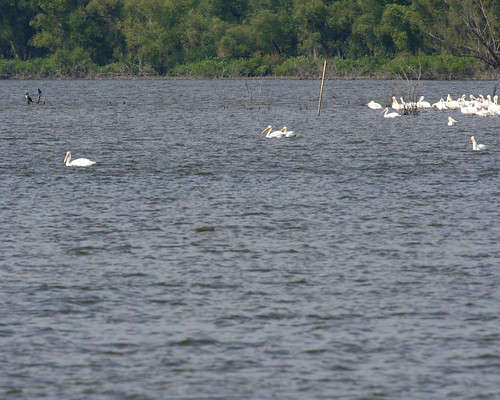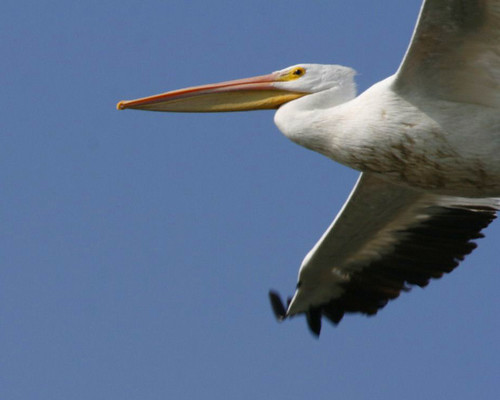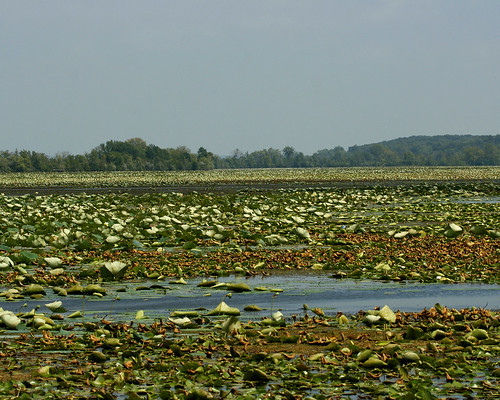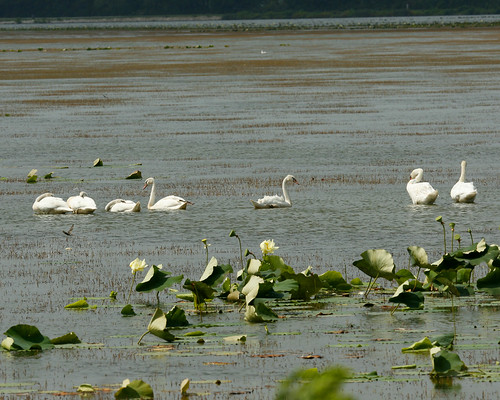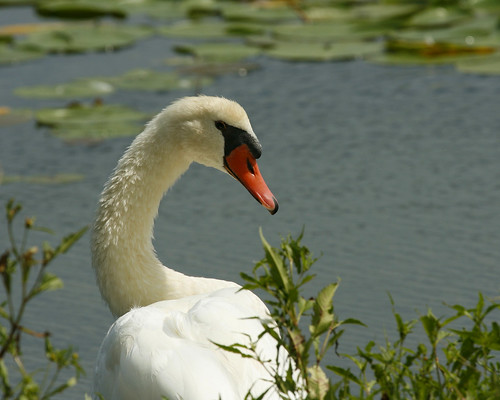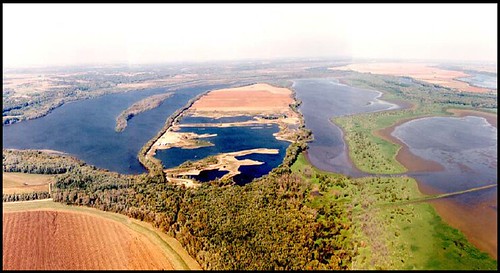
Cover photo from US Army Corps of Engineers, Rock Island District document: "Rice Lake State Fish & Wildlife Area Habitat Rehabilitation & Enhancement Project"
The project plan includes new river pumps, levees, and water transmission ditches, as well as the planting of 400 acres in trees. In my opinion, planting trees in an area on Duck Island that is currently being farmed is a fine thing to do. However, removing large numbers of trees that eagles use in the winter to roost and in the spring and summer to nest, in order to build levees and drainage ditches and to install large pumps is way too damaging to the environment. The construction would do nearly as much damage, if not more, to parts of this internationally listed migrating bird habitat as it would help.
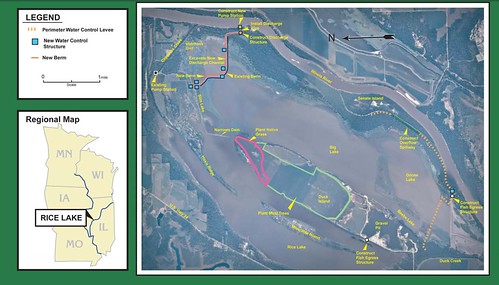
Illustration from US Army Corps of Engineers, Rock Island District document: "Rice Lake State Fish & Wildlife Area Habitat Rehabilitation & Enhancement Project"
The corps plans to build 2,500 foot spillway that requires them to remove two feet of soil each foot of the length of the spillway, reducing the height to 10.5 feet. Water levels along this part of the Illinois River regularly top that. The plan requires the corps to remove more than 20 acres of mature trees for the levee and channel construction, which will impact bald eagle roosts as well as osprey nesting sites.
Many of the site's existing problems are due to lack of state funds to maintain current equipment and poor management. How will IDNR provide adequate funds for the additional costs of operating four new pumps, ditch and channel maintenance and levee maintenance, estimated at a cost of almost $50,000 annually? This number far exceeds the funds available over the past years for such maintenance.
The goal for this project is to enhance wetland and aquatic habitats. However, the best estimate by the Corps is a success rate of only 30 % for moist-soil plants production over a 10-year period! This isn't success! And it comes at a steep cost to the existing environment.
Construction disturbance for this project is expected to last at least three years, causing disruption to species and habitat loss.
Write IDNR Director Miller and Illinois Governor Quinn and ask them to stop this project before $11 million is spent for a 30% success rate and acres of trees lost in the process.
